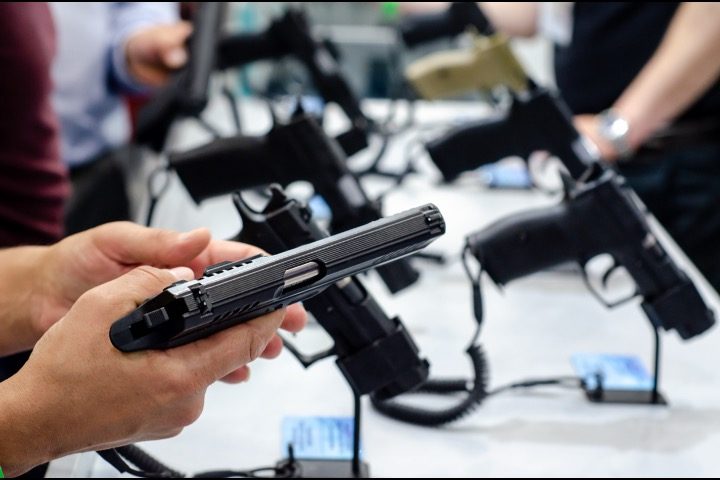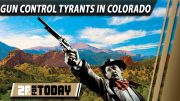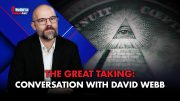
Kate Plummer, a journalist with liberal Newsweek magazine, may be excused for overstating the demise of the National Rifle Association (NRA). It may be more of an expression of hope over reality. The group’s recent and ongoing legal troubles have caused its membership to dwindle and its revenues to decline, but Plummer failed to mention the surging membership and revenue gains being enjoyed by other Second Amendment supporters.
It was Mark Twain who suffered from the same error. When he learned that a reporter from the New York Journal suggested in 1897 that he was dying in poverty in London, he wrote:
I can understand perfectly how the report of my illness got about. I have even heard on good authority that I was dead.
James Ross Clemens, a cousin of mine, was seriously ill two or three weeks ago in London but is well now. The report of my illness grew out of his illness.
The report of my death was an exaggeration.
So it is with the NRA. While its membership has declined from an estimated 5.5 million a few years ago to a suggested 4.3 million currently (the group doesn’t publish the numbers), its revenues have taken a hit in recent years. The NRA’s total revenues in 2018 — $424 million — dropped to $213 million in 2022, according to Citizens for Responsibility & Ethics in Washington (CREW).
The NRA continues to suffer from a “lawsuit by attribution” instigated by New York Attorney General Letitia James (made infamous by a similar “lawsuit by attrition” against her mortal enemy, Donald Trump). After spending taxpayer monies on an 18-month-long investigation, James finally brought the suit against the NRA in August 2020. The case remains open, with no court date for a trial even being set, after more than three years.
Missing from Plummer’s article was the gap being filled by other pro-2A groups, such as Gun Owners of America (GOA), Jews for the Preservation of Firearms Ownership (JPFO), the National Association for Gun Rights (NAGR), the Citizens Committee for the Right to Keep and Bear Arms (CCRKBA, and its affiliate, the Second Amendment Foundation) — and the biggest but most invisible of all, the National Shooting Sports Foundation (NSSF).
The GOA, which former Texas Rep. Ron Paul called “the only non-compromise gun lobby in Washington,” saw its revenues leap from $2.3 million in 2016 to $8.7 million in 2021. And its lobbying expenditures of $3.3 million last year exceeded those of the NRA, which invested $2.6 million in its lobbying efforts.
Robert Spitzer, a former political science professor at the State University of New York at Cortland, has authored six books on gun control and is the “go-to-guy” for gun-control advocates. He told The Guardian, another far-left, anti-gun news outlet, that “the GOA very much wants to replace the NRA as the nation’s pre-eminent gun rights group. To that end, it is raising and spending more money, filing more suits against gun laws, and has formed its own Super Pac and political victory fund.”
The GOA pulls no punches. It has called out the ATF (the Bureau of Alcohol, Tobacco, Firearms and Explosives) as “a rogue executive branch [agency] that flat out hates gun owners and the Constitution.” It also called out the 29 Republicans who voted for the Biden gun-control law, the deliberately ill-named Bipartisan Safer Communities Act, declaring them to be “cowardly” in their support of it.
But the big daddy, working behind the scenes, is the National Shooting Sports Foundation (NSSF). A business trade group, the NSSF has seen its membership of gun manufacturers, gun dealers, and other firearms firms jump by 25 percent in just the last few years. And its revenues leapt from $36 million in 2016 to over $51 million in 2022. It has four full-time lobbyists on its payroll, and is currently seeking a fifth for its Washington, D.C., office.
One of the group’s primary targets is defending 2005’s Protection of Lawful Commerce in Arms Act, which protects firearms makers and dealers from being held liable when a crime is committed with one of its products. As Spitzer noted:
The NSSF has stepped up its political activities in at least three ways: much more political lobbying and related activities in DC and elsewhere; filing lawsuits against gun laws around the country in the courts, especially after the supreme court’s 2022 Bruen decision; and promoting gun manufacturing and sales data, which is increasingly being cited in court cases by gun-rights litigants.
The industry group has overtaken the NRA, said Kristen Rand, a lawyer with the anti-gun Violence Policy Center: “The NSSF functions as the gun industry’s voice … [and] is eclipsing the NRA’s lobbying power on Capitol Hill.”
A recent example of NSSF’s firepower involved scuttling the Biden administration’s first nominee to head up the ATF, David Chipman. After being exposed for denying his presence at the Waco Siege by the ATF in 1993, he was forced to resign, and the White House withdrew its nomination.
Driving all of this political action, of course, is the threat, becoming ever more obvious, of total gun confiscation by the federal government. Newsweek lamented the fact that the more Americans become aware of the threat, the more they stock up on guns and ammunition. Wrote Plummer:
Nor have the NRA’s difficulties dissuaded Americans from buying guns. Forty-five percent of U.S. households owned at least one firearm in 2022, according to research compiled by Statista, the highest figure since 2011—and 8 percentage points higher than in 2013.



